Create a Healing Haven at Home 🏡
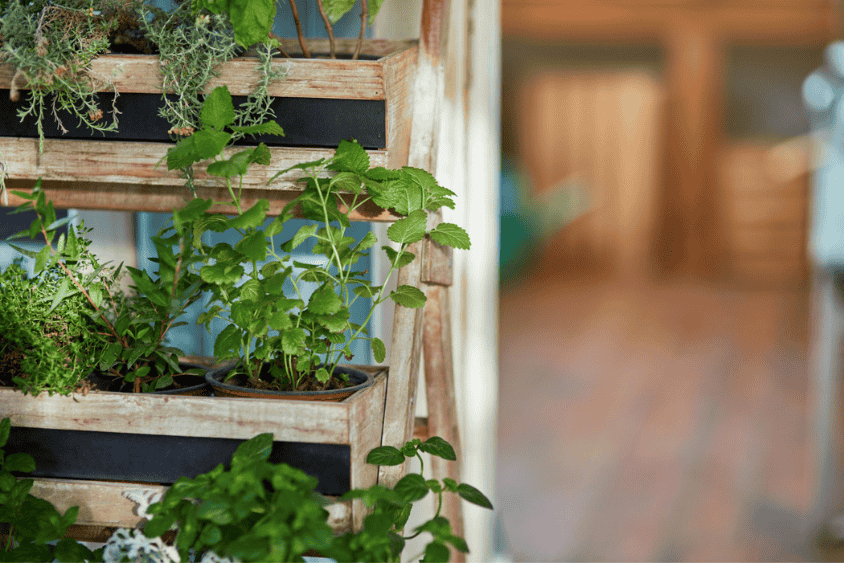
Vertical gardens aren’t just about aesthetics; they can also be a source of natural remedies 🌱.
Medicinal herbs for vertical gardens have been used for centuries to treat ailments, boost immunity, and promote relaxation. 🌺💆♀️
By growing medicinal herbs for vertical gardens, you can have fresh and powerful ingredients ready to use, even in compact spaces.
In this guide, we’ll explore medicinal herbs that are easy to grow and maintain in vertical gardens, along with their benefits and care tips. 🌱🌟
Why Grow Medicinal Herbs in Vertical Gardens?🌼
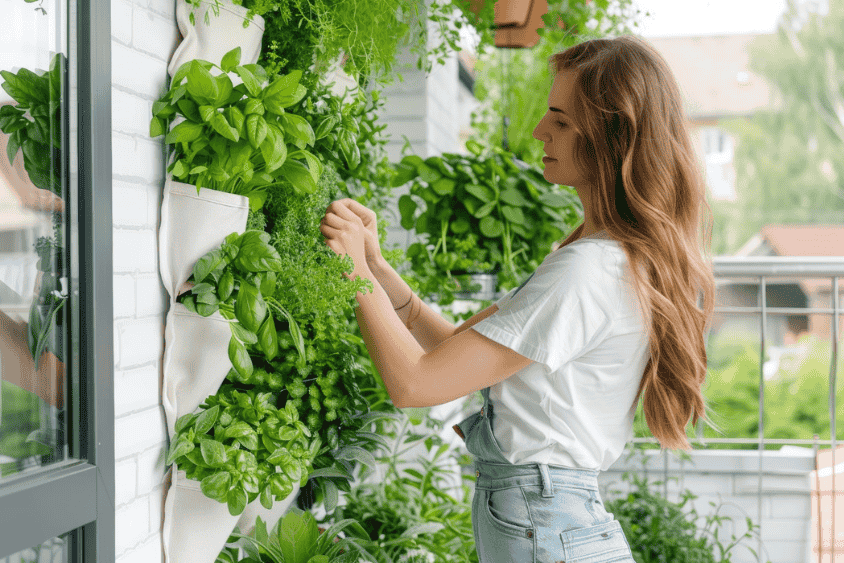
Space Efficiency:
Vertical gardens maximize small areas, making them ideal for urban homes or apartments. 🏙️
Easy Accessibility:
Fresh herbs are always within reach for teas, tinctures, and other remedies. ☕💧
Cost-Effective:
Growing your own medicinal herbs for vertical gardens reduces dependency on store-bought alternatives. 💵🌿
Healthier Living:
Many herbs purify the air and contribute to a more natural and calming home environment. 🍃🌺
Top 15 Medicinal Herbs for Vertical Gardens🌱
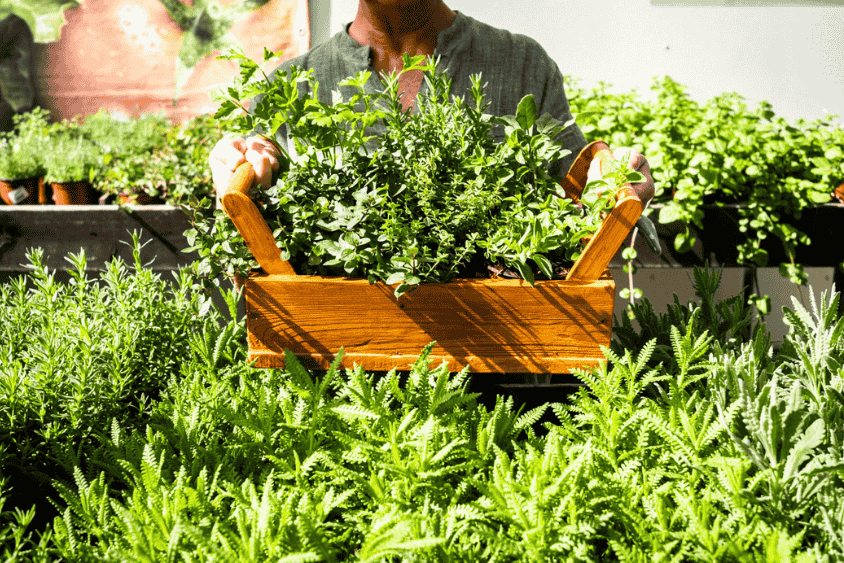
If you prefer learning through visual demonstrations, feel free to watch the video 🎥
1. Mint 🌿
Medicinal Benefits:
Mint helps relieve digestive issues, reduces nausea, and soothes headaches.
Growing Conditions:
It thrives in partial sunlight and moist soil. 🌞💧
Care Tip:
Mint can spread aggressively, so it’s best to plant it in its own container to keep it under control. 🪴
2. Rosemary 🌿
Medicinal Benefits:
Rosemary improves memory, supports digestion, and helps relieve muscle pain.
Growing Conditions:
Rosemary loves full sunlight and well-drained soil. 🌞
Care Tip:
Avoid overwatering, and prune regularly to maintain its shape and promote new growth. ✂️
3. Basil 🌿
Medicinal Benefits:
Basil supports digestion, boosts immunity, and has anti-inflammatory properties.
Growing Conditions:
Basil requires 6-8 hours of sunlight and well-drained soil. 🌞
Care Tip:
Prune regularly to encourage new growth and prevent the plant from flowering too early. ✂️
4. Parsley 🌿
Medicinal Benefits:
Parsley is rich in vitamins A, C, and K, supports digestion, and acts as a natural diuretic. It can also freshen breath.
Growing Conditions:
Parsley prefers partial sunlight and moist, well-drained soil. 🌞💧
Care Tip:
Harvest leaves regularly to encourage fresh growth and prevent the plant from becoming too woody. ✂️
5. Oregano 🌿
Medicinal Benefits:
Oregano fights infections, supports respiratory health, and has antibacterial properties.
Growing Conditions:
Oregano requires full sunlight and moderately dry soil. 🌞
Care Tip:
Harvest the leaves before the plant flowers to get maximum flavor and potency. 🍃
6. Thyme 🌿
Medicinal Benefits:
Thyme treats respiratory issues, boosts immunity, and has antiseptic properties.
Growing Conditions:
Thyme prefers sunny spots and slightly dry soil. 🌞
Care Tip:
Avoid overwatering, as thyme is drought-tolerant and does well with minimal water. 💧
7. Lemon Balm 🍋
Medicinal Benefits:
Lemon balm reduces stress, improves sleep, and soothes cold sores.
Growing Conditions:
It grows well in partial shade with moist soil. 🌑💧
Care Tip:
Trim the plant frequently to encourage bushy growth and prevent it from becoming leggy. ✂️
8. Chives 🌱
Medicinal Benefits:
Chives are rich in antioxidants, support digestive health, and can help lower cholesterol levels. They also exhibit antibacterial and anti-inflammatory properties.
Growing Conditions:
Chives thrive in full sunlight and well-drained, moist soil. 🌞💧
Care Tip:
Trim the leaves regularly to encourage fresh growth and prevent them from becoming tough. Harvest before flowers bloom for the best flavor. ✂️
9. Dill 🌿
Medicinal Benefits:
Dill is known for its digestive benefits, helping to relieve bloating, gas, and indigestion. It also has antimicrobial properties and can help soothe anxiety.
Growing Conditions:
Dill prefers full sunlight and well-drained soil with a moderate amount of moisture. 🌞💧
Care Tip:
Trim the plant regularly to avoid it growing too sparse and elongated. Harvest the leaves before flowering for the best flavor, and allow the seeds to mature for use in cooking or as a natural remedy. ✂️🌾
10. Sage 🌿
Medicinal Benefits:
Sage reduces inflammation, improves digestion, and supports mental clarity.
Growing Conditions:
Sage prefers sunny areas with slightly dry soil. 🌞
Care Tip:
Prune regularly to prevent woody growth and encourage the production of fresh leaves. ✂️
11. Aloe Vera 🌱
Medicinal Benefits:
Aloe vera treats burns, moisturizes the skin, and aids in digestion.
Growing Conditions:
Aloe vera prefers bright, indirect sunlight and sandy soil. ☀️
Care Tip:
Allow the soil to dry out between waterings to prevent root rot. 💦
12. Lavender 💜
Medicinal Benefits:
Lavender reduces anxiety, promotes sleep, and helps relieve headaches.
Growing Conditions:
Lavender needs full sunlight and well-drained soil to thrive. 🌞
Care Tip:
Harvest the flowers when the buds are fully formed but not yet open for the strongest aroma. 🌸
13. Chamomile 🌼
Medicinal Benefits:
Chamomile calms the nerves, aids sleep, and relieves stomach discomfort.
Growing Conditions:
Chamomile prefers full sunlight but can also adapt to partial shade. 🌞
Care Tip:
Harvest flowers in the morning for the best potency and flavor. 🌸
14. Echinacea 🌸
Medicinal Benefits:
Echinacea is well-known for its ability to boost the immune system, fight infections, and reduce inflammation. It is commonly used to prevent colds and support overall immune health.
Growing Conditions:
Echinacea thrives in full sunlight and prefers well-drained, slightly dry soil. 🌞💧
Care Tip:
Water sparingly and prune the flowers to encourage the growth of new blooms. It’s also important to let the plant dry out slightly between waterings to avoid root rot. ✂️
15. Peppermint 🌱
Medicinal Benefits:
Peppermint helps with digestive issues, relieves headaches, and can also soothe sore muscles when used topically. It possesses potent anti-inflammatory and antimicrobial properties.
Growing Conditions:
Peppermint grows best in partial to full sunlight and requires moist, well-drained soil. 🌞💧
Care Tip:
Peppermint can spread quickly, so it’s best to grow it in a container or a designated space in your vertical garden. Trim the leaves regularly to keep the plant healthy and manageable. ✂️🪴
Want to Grow More Herbs in Your Vertical Garden? 🌿 Discover the Best Herbs for Indoor Vertical Gardens in our detailed guide! 🌱✨
How to Care for Medicinal Herbs in Vertical Gardens🌱💧
When growing medicinal herbs for vertical gardens, proper care is essential to ensure that they thrive and provide the healing benefits they’re known for. Here’s how to take care of your medicinal herbs effectively:
Lighting:
Most medicinal herbs thrive in full sunlight. Position your garden in a well-lit area or use grow lights if indoors. 💡🌞
Watering:
Water consistently but avoid waterlogging. Many herbs prefer slightly dry soil. 🌱💧
Fertilization:
Use organic compost or slow-release fertilizers to ensure a steady supply of nutrients. 🌱🍂
Pruning:
Regularly trim your herbs to encourage new growth and maintain their medicinal potency. ✂️🌿
Pest Control:
Opt for natural solutions like neem oil or companion planting to keep pests at bay. 🐜🍃
Creative Ways to Use Medicinal Herbs 🍃✨
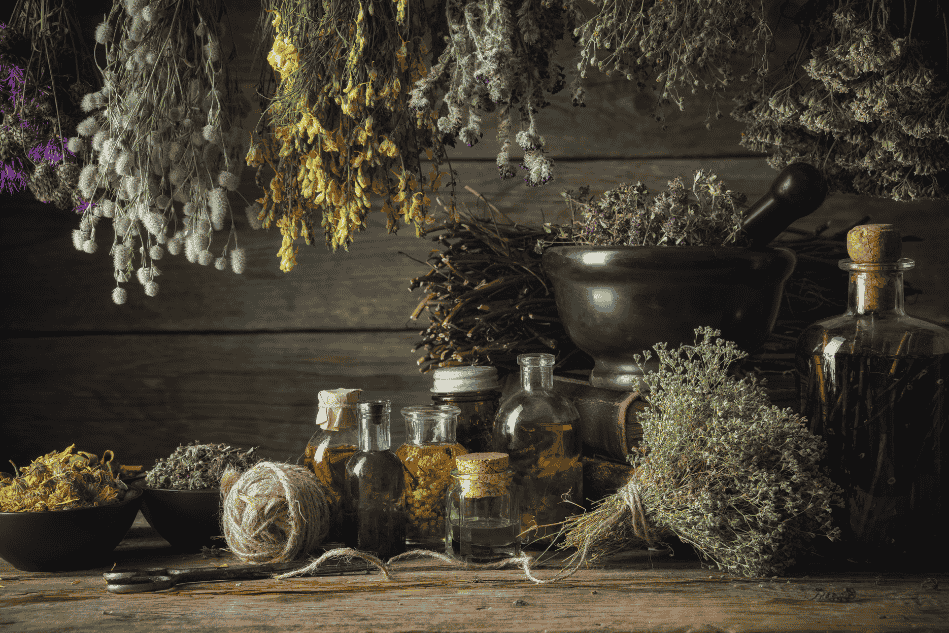
Teas and Infusions:
Brew herbs like chamomile, lemon balm, or mint for soothing teas. ☕🌸
Topical Applications:
Use aloe vera gel for burns or lavender oil for relaxation. 🌿💆♀️
Natural Remedies:
Create tinctures or balms with rosemary, thyme, or oregano. 🌱💧
Aromatic Benefits:
Dry and bundle herbs like sage or lavender for home aromatherapy. 🌿🌸
Looking to expand your knowledge on medicinal herbs and their benefits? Check out the Herb Society of America for additional resources and tips on growing and using medicinal plants.
Tips for Designing a Medicinal Vertical Garden 🪴🌿
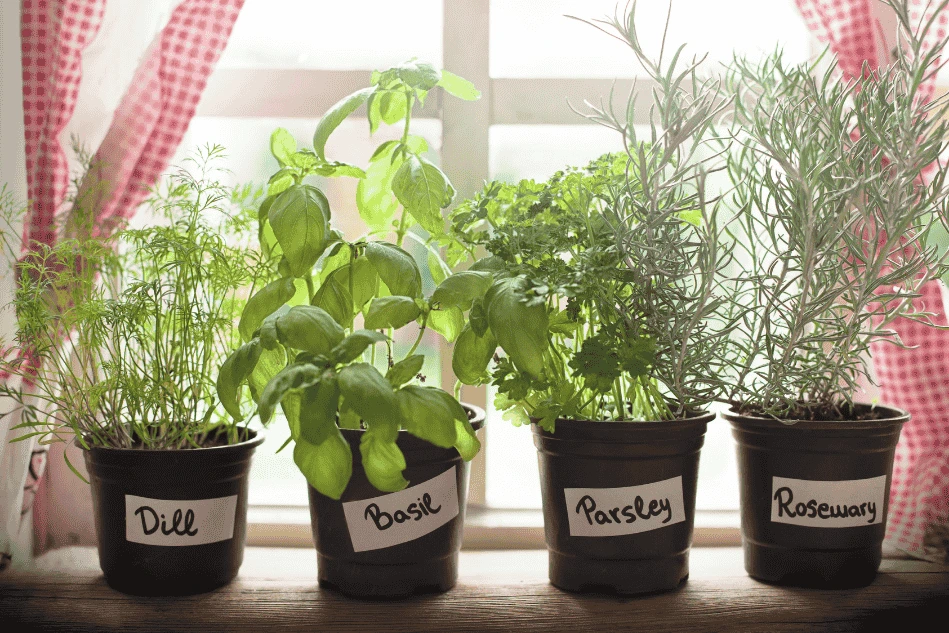
Layering:
Place cascading herbs like mint at the top and compact ones like thyme below. 📏🌿
Labeling:
Use small tags or chalkboard paint to identify each herb. 🏷️
Mixing:
Combine herbs with similar light and water needs in the same section. 🌱💧
FAQ (Frequently Asked Questions) ❓
1. Can I grow medicinal herbs indoors?
Yes, many medicinal herbs, such as mint, basil, and lavender, thrive indoors. Ensure they receive adequate sunlight or supplement with grow lights. 🌞🏠
2. How often should I water medicinal herbs in vertical gardens?
Water medicinal herbs regularly, but make sure not to overwater. Most herbs prefer slightly dry soil between waterings. 💧🌱
3. Do I need special containers for growing medicinal herbs vertically?
You can use any container with proper drainage, but self-watering pots are ideal for minimizing maintenance. Additionally, containers should be light enough to avoid stressing your vertical garden structure. 🪴
4. What is the best way to store fresh medicinal herbs?
You can store fresh herbs by drying them or by making tinctures and oils. Many herbs like rosemary, thyme, and sage can also be frozen for longer storage. ❄️🌿
A Natural Medicine Cabinet at Your Fingertips 🌱💚

Growing medicinal herbs for vertical gardens is a practical and enriching way to incorporate natural remedies into your lifestyle. With minimal effort, you can create a beautiful and functional garden that supports your health and well-being. 🌿💧
Start small, experiment with a few easy-to-grow herbs, and enjoy the benefits of having your own healing oasis at home. 🌱🌟

